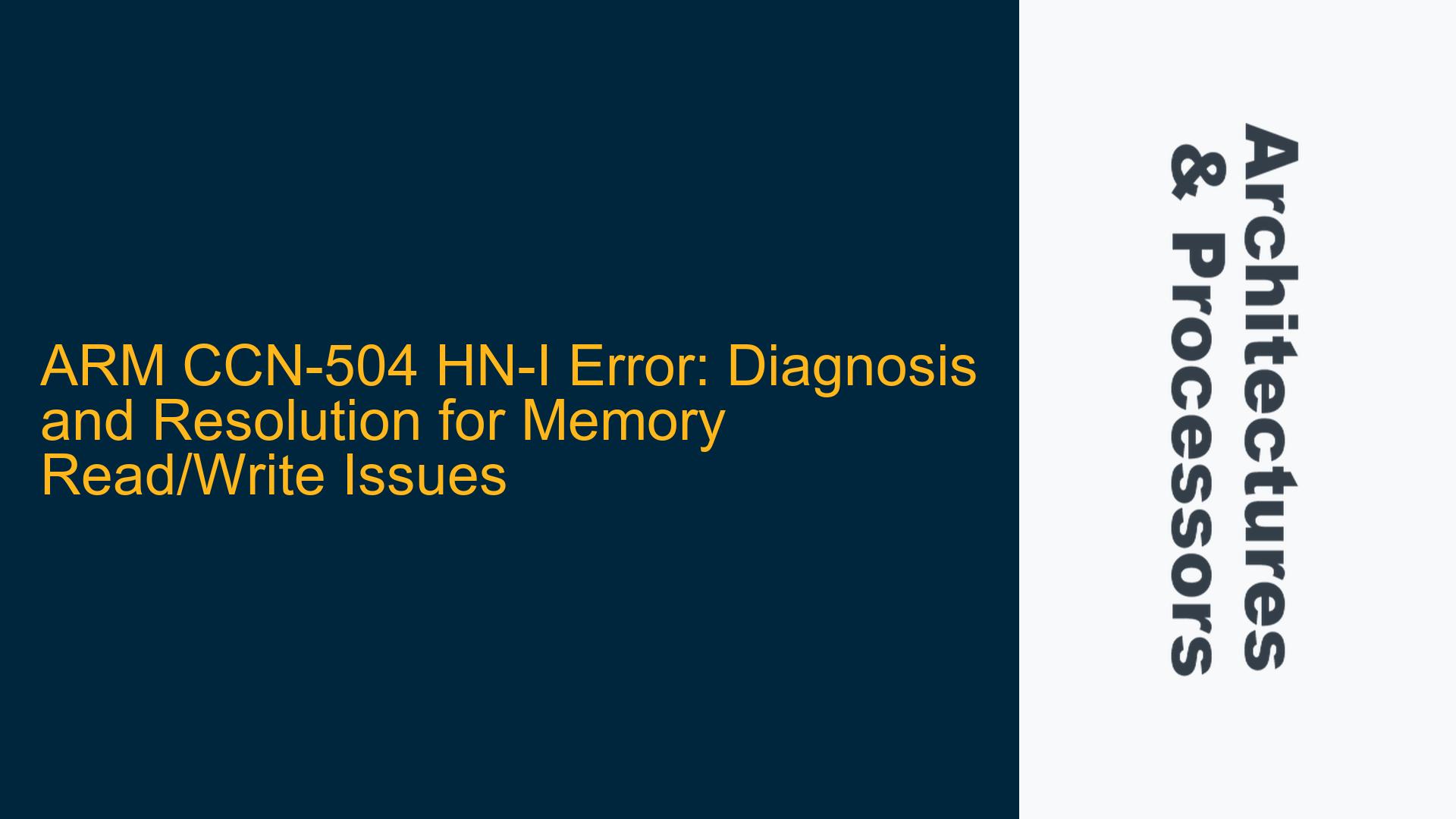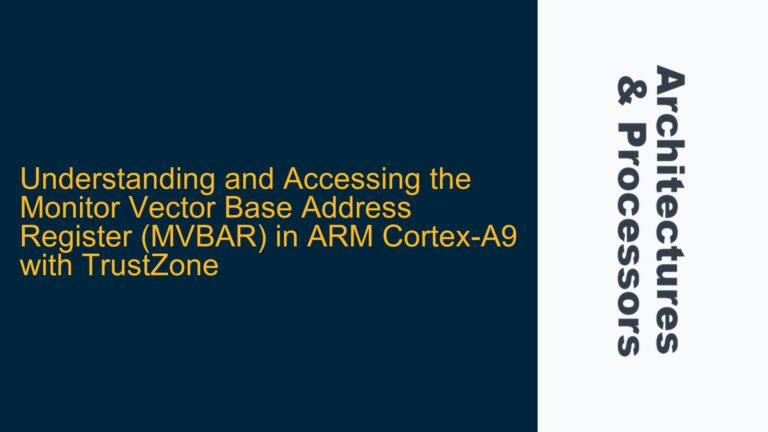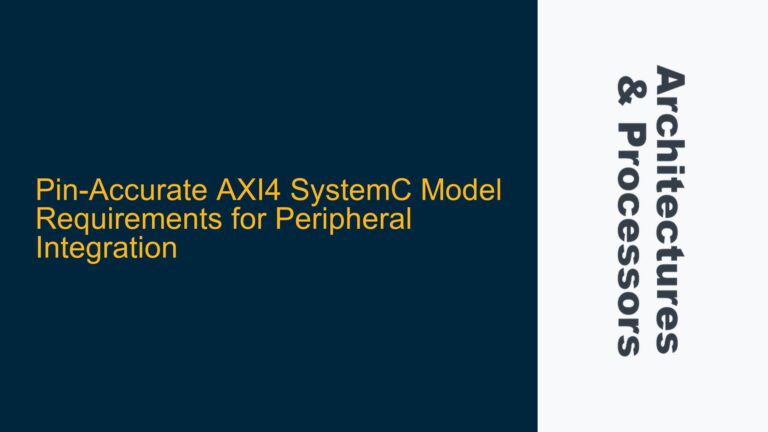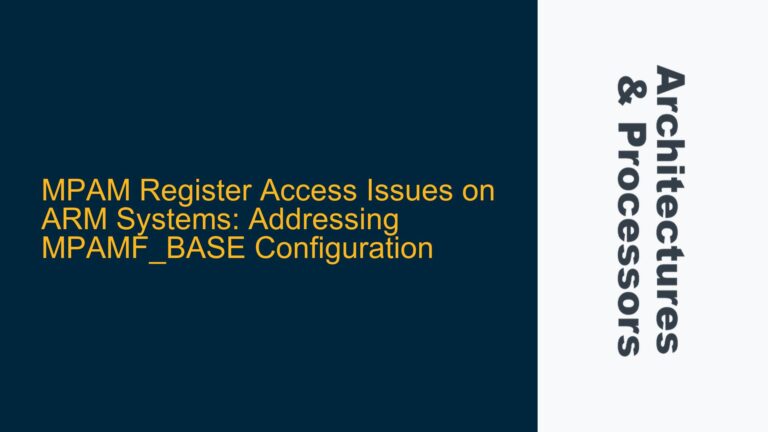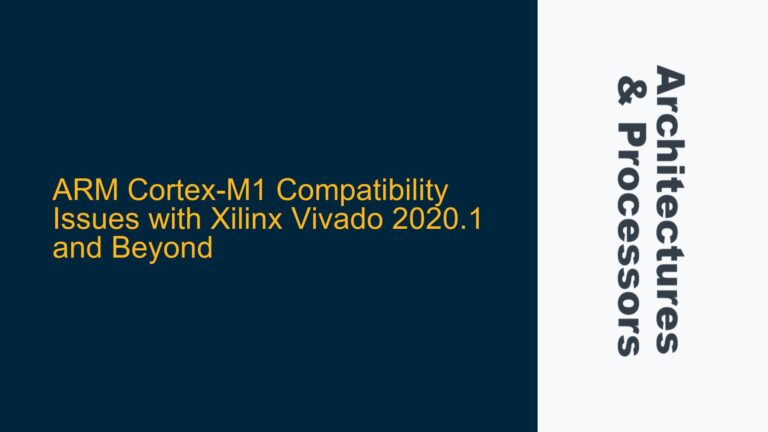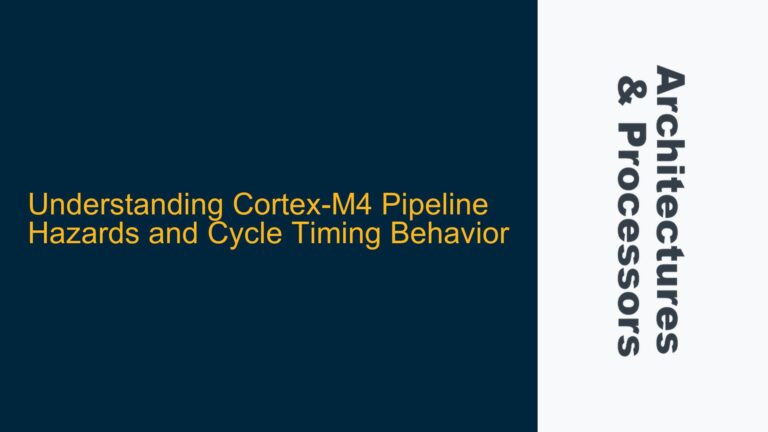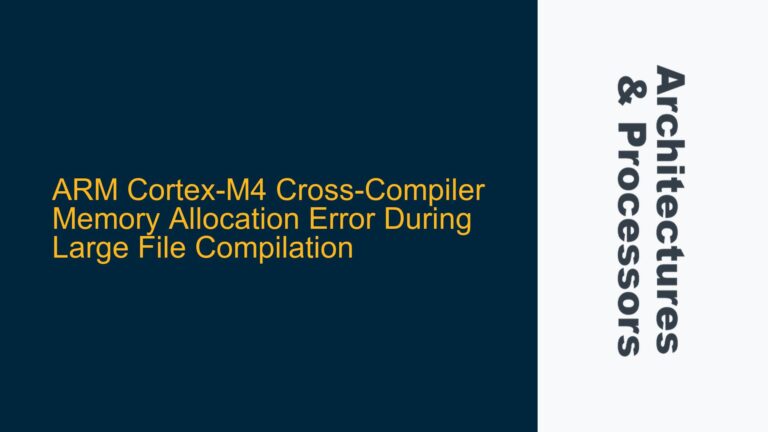ARM CCN-504 HN-I Module Error Syndrome During Memory Operations
The ARM CCN-504 interconnect is a critical component in high-performance systems, facilitating communication between CPUs, memory, and peripherals. The HN-I (Home Node Interface) module within the CCN-504 is responsible for managing memory transactions, ensuring data coherence, and handling error reporting. When the HN-I module detects errors during memory read/write operations, it logs these errors in the hn-i.r_syndrome_reg0 register. In this case, the error syndrome value 0xF80000C 698280242 indicates a specific fault condition that requires detailed analysis.
The error syndrome register provides a snapshot of the fault, including details such as the type of error, the transaction that caused it, and the state of the system at the time of the fault. Writing 0xFFFFFFFFFFFFFFFF to the hn-i.err_syndrome_clr register is intended to clear the error, but the persistence of the error suggests an underlying issue that is not resolved by simply clearing the syndrome. This raises concerns about system stability, as repeated errors could lead to data corruption, system crashes, or other unpredictable behavior.
Understanding the root cause of the error requires a deep dive into the CCN-504 architecture, the specific conditions under which the error occurs, and the interactions between the HN-I module and other system components. The error syndrome value provides a starting point, but additional investigation is needed to determine whether the issue is related to hardware, firmware, or a combination of both.
Memory Transaction Timing and Cache Coherency Issues
One of the most likely causes of the HN-I error syndrome is a timing or coherency issue during memory transactions. The CCN-504 relies on strict timing protocols to ensure that memory operations are completed correctly and that cache coherency is maintained across multiple CPUs and devices. If a memory transaction is initiated or completed at an incorrect time, or if the cache state is not properly synchronized, the HN-I module may detect an error and log it in the hn-i.r_syndrome_reg0 register.
Timing issues can arise from several sources, including incorrect configuration of the CCN-504, mismatched clock domains, or delays in signal propagation. For example, if the memory controller is not properly synchronized with the CCN-504, it may attempt to read or write data before the interconnect is ready, leading to an error. Similarly, if the cache coherency protocol is not correctly implemented, the HN-I module may detect inconsistencies in the cache state and flag them as errors.
Another potential cause is a hardware fault in the CCN-504 or the memory subsystem. This could include issues such as faulty memory cells, damaged traces on the PCB, or manufacturing defects in the CCN-504 itself. While hardware faults are less common than software or configuration issues, they cannot be ruled out without thorough testing.
Finally, firmware or software bugs could also contribute to the error. If the firmware that manages the CCN-504 is not correctly handling memory transactions or cache coherency, it could lead to errors being detected by the HN-I module. This could include issues such as incorrect initialization of the CCN-504, improper handling of error conditions, or bugs in the memory management code.
Diagnosing and Resolving HN-I Errors in the CCN-504
To diagnose and resolve the HN-I error syndrome, a systematic approach is required. The first step is to gather as much information as possible about the error, including the conditions under which it occurs, the frequency of the errors, and any patterns or correlations with other system events. This can be done by enabling additional logging and debugging features in the CCN-504 and monitoring the system during operation.
Once sufficient data has been collected, the next step is to analyze the error syndrome value in detail. The value 0xF80000C 698280242 can be broken down into its constituent parts to determine the specific type of error and the transaction that caused it. This information can then be used to narrow down the possible causes and focus the investigation on the most likely sources of the problem.
If the error is determined to be related to timing or coherency issues, the next step is to review the configuration of the CCN-504 and the memory subsystem. This includes checking the clock synchronization settings, ensuring that the cache coherency protocol is correctly implemented, and verifying that the memory controller is properly configured. Any discrepancies or misconfigurations should be corrected, and the system should be retested to see if the error persists.
If the error is suspected to be caused by a hardware fault, additional testing will be required. This could include running diagnostic tests on the memory subsystem, inspecting the PCB for damage, or replacing the CCN-504 with a known-good unit. If a hardware fault is confirmed, the faulty component should be repaired or replaced, and the system should be retested to ensure that the error has been resolved.
If the error is determined to be caused by a firmware or software bug, the next step is to review the code that manages the CCN-504 and the memory subsystem. This includes checking for any issues in the initialization code, ensuring that error conditions are properly handled, and verifying that the memory management code is functioning correctly. Any bugs or issues should be fixed, and the firmware or software should be updated and retested.
In addition to these steps, it may also be necessary to implement additional error handling and recovery mechanisms in the system. This could include adding checks for specific error conditions, implementing retry mechanisms for failed memory transactions, or adding additional logging and debugging features to help diagnose future errors.
Finally, it is important to document the entire process, including the steps taken to diagnose and resolve the error, any changes made to the system, and the results of the testing. This documentation can be invaluable for future troubleshooting efforts and can help ensure that similar issues are quickly identified and resolved in the future.
By following these steps, it is possible to diagnose and resolve the HN-I error syndrome in the CCN-504, ensuring that the system remains stable and reliable. While the process can be complex and time-consuming, the effort is well worth it to ensure that the system operates correctly and that any potential issues are addressed before they can cause more serious problems.
